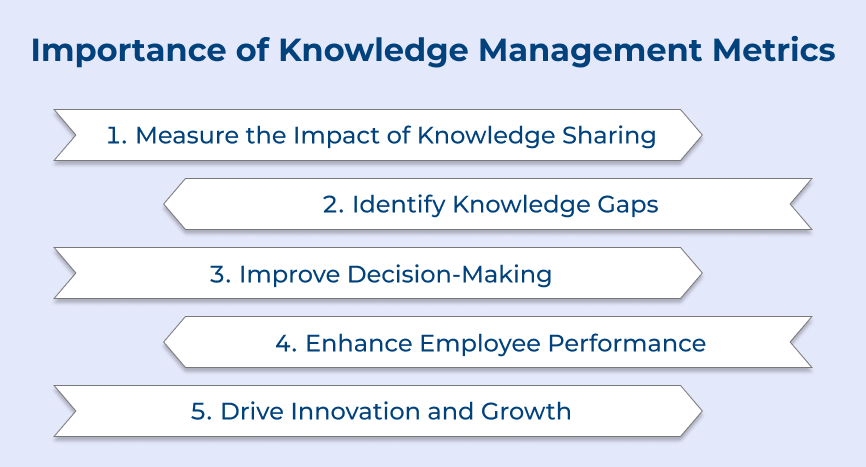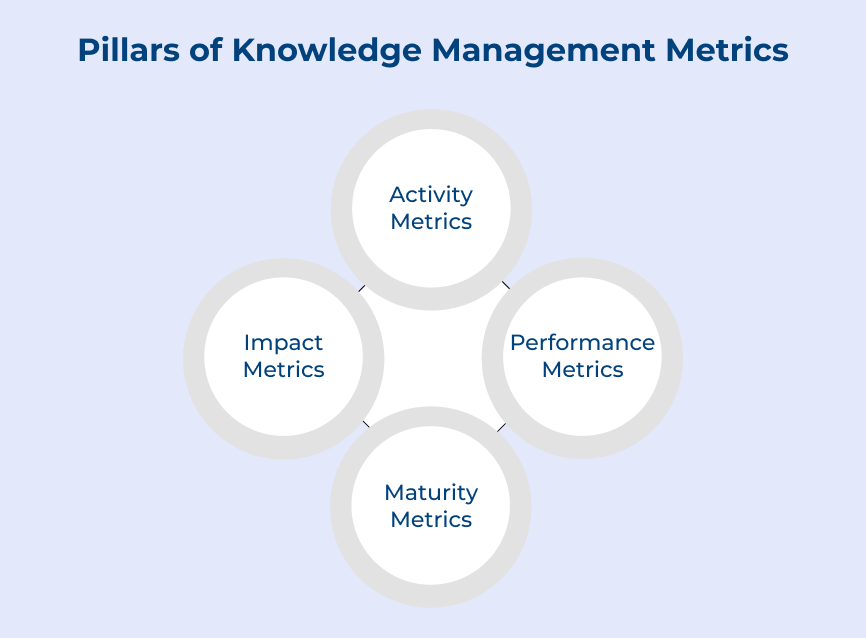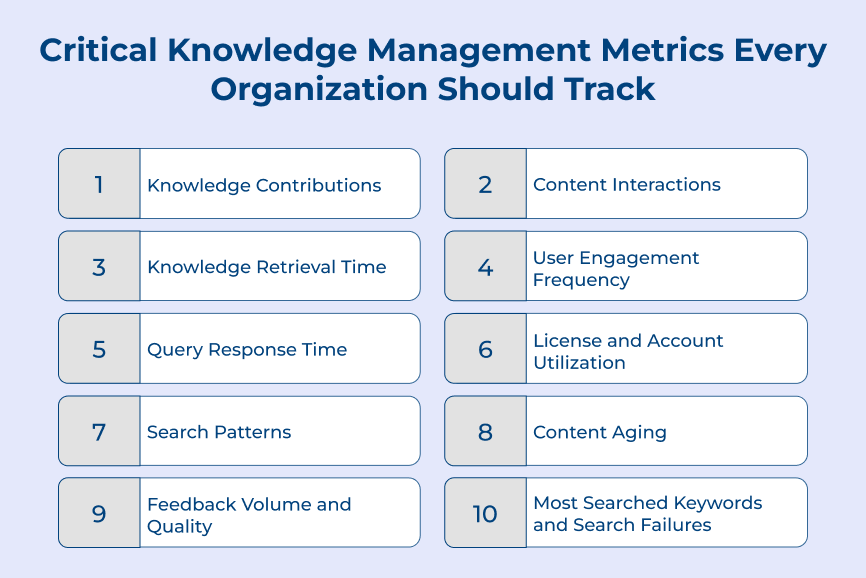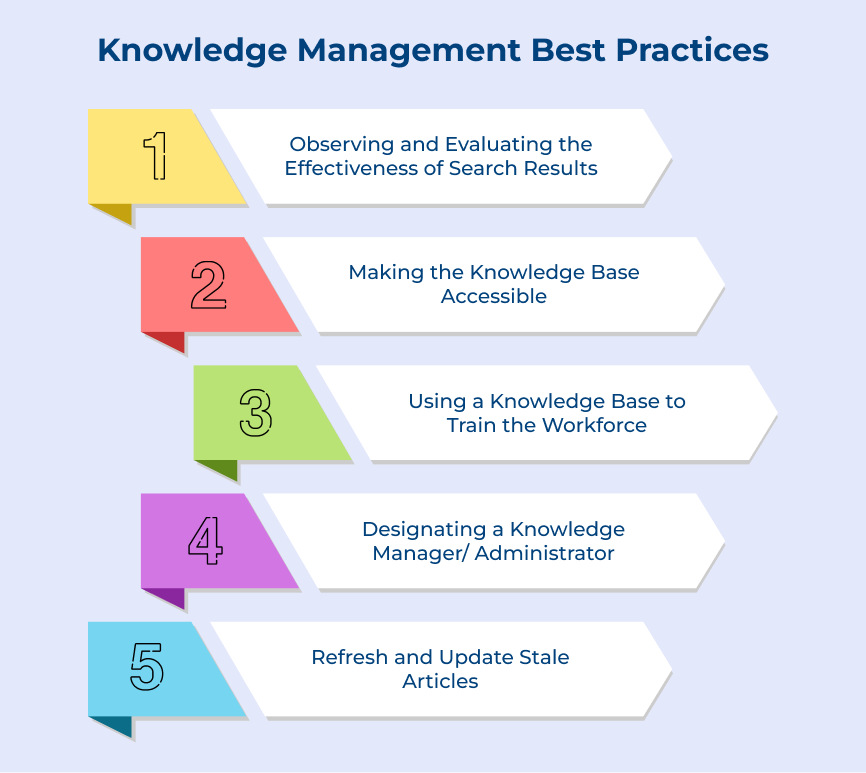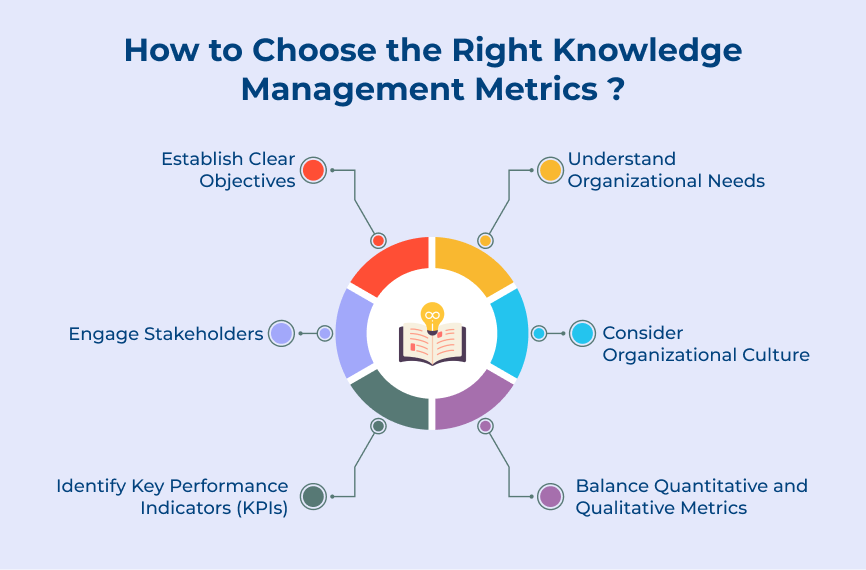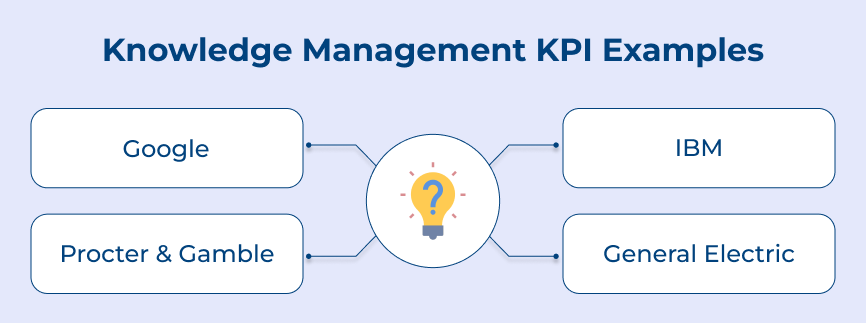1. Knowledge Contributions
Knowledge contributions are an essential knowledge management metric that every organization should track. The metric measures the amount and quality of knowledge shared by employees within the organization. The purpose of tracking knowledge contributions is to understand how well employees are sharing and disseminating knowledge. It also helps to identify areas where knowledge gaps exist.
Organizations can use tools such as intranet platforms, knowledge-sharing forums and collaboration software. Identifying top contributors and monitoring the quality of their contributions can encourage a culture of knowledge-sharing.
Actionable tips:
- Encouraging a culture of knowledge sharing through rewards and recognition programs
- Providing training and resources to help employees effectively share their knowledge
- Regularly analyzing Knowledge Contributions data to identify trends and areas for improvement.
2. Content Interactions
Content interactions are a crucial knowledge management metric that every organization should track. The metric measures the level of engagement and interaction with the content that is being shared within the organization. The purpose of tracking content interactions is to determine the effectiveness of the content being created and shared.
One use case for tracking content interactions is in a corporate training program. Organizations can track employees’ training material interactions to pinpoint improvement areas. It can also help enhance learning outcomes.
Actionable tips:
- Regularly monitor the data to identify trends and patterns.
- Use A/B testing to compare different types of content and determine what resonates best with employees.
- Solicit feedback from employees on the content they find most valuable to further refine the content strategy.
3. Knowledge Retrieval Time
Knowledge retrieval time is a vital knowledge management metric that every organization should track. The metric measures the time taken to retrieve relevant information or knowledge needed for decision-making or problem-solving. The goal of tracking knowledge retrieval time is to provide employees with quick access to necessary information for efficient job performance.
Organizations can track the time it takes for employees to search for and locate information in their internal knowledge repositories or systems. A real-world use case of Knowledge Retrieval Time can be seen in a customer service department.
Actionable tips:
- Regularly updating knowledge repositories
- Providing training on effective search techniques
- Implementing tools or systems that streamline the retrieval process.
4. User Engagement Frequency
User Engagement Frequency is a crucial knowledge management metric that every organization should track. The metric measures how often users interact with a system or platform within a specific time frame. The purpose of tracking user engagement frequency is to understand how engaged users are with the organization’s knowledge management system.
Organizations can analyze the frequency of user interactions, such as logins, page views, downloads or contributions to the system. Tracking user engagement frequency can identify trends, patterns and areas for improvement within the knowledge management system.
Actionable tips:
- Set benchmarks and goals for user engagement to measure success over time.
- Segment users by role or department to analyze engagement patterns among different groups.
- Use tools like heatmaps or session recordings to visually track user interactions and behaviors within the system.
5. Query Response Time
Query response time is a crucial knowledge management metric that every organization should track. It measures the time it takes for a company to respond to queries from customers or other stakeholders. The purpose of tracking query response time is to ensure that inquiries are addressed promptly.
A use case for query response time could be a customer service department tracking the time it takes to respond to customer inquiries via email, phone or social media. The company can identify any bottlenecks in its communication process by monitoring the metric. It can make improvements to provide faster and more effective responses.
Actionable tips:
- Setting realistic targets for response times
- Implementing automation tools to streamline the process
- Regularly analyzing data to identify trends and areas for improvement.
6. License and Account Utilization
The purpose of tracking license and account utilization is to ensure that the organization is getting the most out of its investments in software licenses and user accounts. Monitoring the metric optimizes licensing costs boosts user productivity and identifies security risks.
A use case for license and account utilization is in a software development company. It can track license and account utilization which can help in identifying any unused licenses or accounts. The feature allows the organization to reallocate resources effectively.
Actionable tips:
- Conducting regular audits of software licenses and user accounts
- Setting up alerts for any unusual activity or usage patterns
- Establishing clear user account management policies within the organization.
7. Search Patterns
Search patterns are knowledge management metrics that every organization should track. It can help them to better understand how information is utilized within the organization.
The purpose of tracking search patterns is to identify common search queries, popular keywords and user behavior when searching for information. Analyzing the patterns can improve the search functionality of their knowledge management systems. It can also help identify trends and optimize content to better meet the needs of users.
Actionable tips:
- Regularly reviewing search data to identify trends
- Optimizing metadata and tagging to improve search results
- Using search analytics to inform content strategy and knowledge management decisions.
8. Content Aging
Content aging is a knowledge management metric that every organization should track to ensure that their information remains up-to-date. The metric refers to the age of content within an organization’s knowledge base manuals or training materials. The purpose of tracking content aging is to identify outdated information that may no longer be useful to employees.
Organizations should regularly update or remove outdated information to keep employees informed with current knowledge. One use case for content aging is in employee training programs, where outdated training materials can lead to confusion or errors.
Actionable tips:
- Regularly scheduled content audits
- Setting up automated reminders for content reviews
- Involving subject matter experts in the review process to ensure accuracy and relevance.
9. Feedback Volume and Quality
Feedback Volume and Quality are essential knowledge management metrics that every organization should track. It provides insights into the quantity and quality of feedback received from customers, employees, or other stakeholders. Tracking the metric helps measure the engagement and satisfaction levels of those interacting with the organization.
Organizations should collect feedback regularly through surveys, analyze data for trends and take action accordingly. Let’s assume, that if feedback volume is low, it may indicate a lack of communication or engagement. Poor feedback quality could signal issues with products, services or processes.
Actionable tips:
- Setting measurable goals for feedback collection
- Utilizing automated feedback systems for efficiency
- Regularly communicating feedback findings with relevant departments for continuous improvement.
10. Most Searched Keywords and Search Failures
The purpose of tracking most searched keywords is to understand the topics that are of high interest to employees. It allows for targeted knowledge management initiatives to be developed. Tracking search failures helps identify areas where employees are unable to find the information they need.
Organizations can analyze search logs from their knowledge management systems to identify popular search terms where searches did not return relevant results. Organizations can optimize knowledge management by identifying employees’ needs and information search challenges.
Actionable tips:
- Include regularly reviewing and updating search analytics
- Conducting user surveys to gather feedback on search functionality
- Utilizing AI-powered search capabilities to improve search accuracy and relevancy.
Optimize Knowledge Management Using Best Practices
Below are the best practices you can employ to optimize your organization’s knowledge management system effectively.






